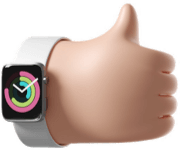Eliminate Queues with an Appointment System for Dry Cleaning
Using an appointment system is the most effective way to reduce waiting times and improve customer experience in your dry cleaning store. With online booking and slot management, an appointment system increases operational efficiency, simplifies traffic management, and boosts customer retention. In this guide, we explain implementation steps, technical requirements, and measurable benefits.
For modern dry cleaning businesses, an appointment system is not just an option but a competitive advantage. When implemented correctly, it increases service capacity and enhances customer satisfaction. Below you’ll find short and practical steps on how to reduce waiting times:
- Appointment system setup: Start with online booking via a mobile app or web form.
- Slot management: Identify peak hours and allocate slots accordingly—for example, plan separate capacities for lunch breaks and late afternoons.
- Customer notifications and reminders: SMS/email reminders reduce cancellations, making operations more predictable.
- Data tracking: Regularly report metrics such as appointment fill rate, cancellation rate, and average waiting time.
Digital appointment solutions have been reported to reduce average waiting times by 30–40% and increase repeat customers by 15%.
Example: A mid-sized dry cleaning chain in a medium-sized city piloted with 200 weekly appointments; they reduced waiting time from 25 minutes to 10 minutes and achieved a 20% improvement in delivery speed. Technically, a simple booking calendar, SMS integration, and a basic CRM are sufficient for the start. During implementation, don’t forget staff training and a customer communication plan—these steps directly improve customer experience and operational efficiency.
Why is an appointment system essential for dry cleaning businesses?
Today, customers expect speed and predictability. For dry cleaning businesses, using an appointment system not only boosts customer satisfaction but also improves operational efficiency. Long queues and uncertain delivery times can cause the loss of loyal customers, making proper planning critical.
- Appointment management: An appointment system streamlines workflows and optimizes staff allocation during peak hours.
- Customer experience: Waiting times are reduced, complaints decrease, and the appointment system provides clear timing for customers.
- Revenue growth: Appointments increase utilization rates, reduce costs from idle workloads, and raise efficiency.
Digital appointment solutions showing up to 30% reduction in waiting times have proven effective even for small businesses.
Analyzing appointment data is essential for data-driven decisions. For example, hiring extra staff for busy Saturdays based on appointment records can balance workload and reduce delivery delays by 20–40%. Example: A mid-sized dry cleaning shop in Istanbul reduced average waiting time from 18 minutes to 7 minutes and increased repeat customer rates after implementing an appointment system.
An appointment system in dry cleaning is a modern necessity. It improves employee productivity and strengthens customer loyalty. To increase your competitiveness, start evaluating an appointment-focused approach now.
In the dry cleaning sector, managing customer flow, maintaining service quality, and reducing dissatisfaction caused by waiting is critical. Using an appointment system not only ensures that customers arrive at specific times but also makes workloads predictable and simplifies staff planning. Especially during peak seasons and lunch hours, queues slow down turnaround and weaken customer loyalty. That’s why technology-based approaches like an online appointment and slot management system for dry cleaning provide a competitive edge in the industry.
A well-designed appointment system provides the following benefits:
- Reduced waiting times: Customers are served within their designated slots, minimizing waiting times.
- Improved customer experience: Timely service and reminders increase satisfaction.
- Operational optimization: Staff levels and equipment usage can be adjusted according to workload.
- Revenue management: Slot pricing or prepayment reduces no-show risks.
Expert insights and industry data show that appointment-based management significantly reduces queue-related losses.
Harvard Business Review notes that waiting times directly affect customer perception and that well-managed appointments increase loyalty.
Implementation steps — from appointment system setup to operations
The goal of implementing an appointment system is to reduce in-store waiting times and increase operational efficiency. First, measure customer traffic—weekly visitor count and peak hours. For many dry cleaners, proper planning reduces waiting times by 40% and significantly boosts satisfaction.
- Analysis: Collect weekly and daily traffic data (e.g., 30% of 200 daily visitors arrive between 12:00–14:00).
- Planning: Define slot durations—e.g., 15-minute intervals adjusted to customer flow.
- Integration: Connect the appointment system with POS, SMS/email reminders, and CRM.
- Training: Teach staff about booking management and customer guidance processes.
- Monitoring: Track occupancy rates and adjust using real-time performance metrics.
Implementation example: A dry cleaner with 200 weekly customers introduced 8×30-minute slots per day, scheduling 32 appointments daily, eliminating queues during peak hours.
Implementation steps — from setup to full operations
Breaking the appointment system setup into simple steps accelerates adoption for both management and employees. First, analyze existing workflows: peak hours, average delivery times, staff capacity, and customer profiles. Then, choose the right online appointment and slot management solution for dry cleaning based on this data. Key features to look for include mobile compatibility, calendar integration, SMS/email reminders, payment integration, and reporting. Remember: a simple interface speeds adoption and increases satisfaction.
Setup stages include:
- Needs analysis: Define which services need slots, average service duration, maximum capacity, and other appointment system parameters. For example, create separate slots for express services.
- Software selection and integration: Integrate with POS, CRM, and accounting software for centralized management.
- Staff training: Teach employees booking management, customer communication, and action protocols—use real case scenarios during training.
- Pilot implementation: Test the system for 2–4 weeks and collect feedback.
- Improvement and scaling: Optimize slot durations, capacities, and reminders with collected data; track performance with regular reporting.
Example: An Istanbul-based dry cleaning chain reduced average waiting times by 40% and improved satisfaction after introducing an appointment system.
Common issues and solutions:
- If no-shows are high, use prepayments or increase reminder frequency. Data shows prepayments reduce no-shows by 35% on average.
- If demand is higher than expected, extend slot durations or schedule extra staff—plan flexibly based on actual data.
- If customers are less tech-savvy, allow phone reservations and provide quick guides to front-desk staff.
Ultimately, an appointment system is not just about technology; it requires a culture of customer communication and process management. Once installed, regularly measure performance and establish feedback loops with staff. This discipline ensures the queue-eliminating dry cleaning appointment system becomes a success in practice, bringing measurable monthly efficiency gains.
Technical features and slot management — components of a successful appointment experience
A successful dry cleaning experience begins with the right appointment system and smartly designed slot management. Technical features include software, integrated payment solutions, instant notifications, and data analytics. Customizable appointment system settings for each branch provide flexibility for different workloads and deliver fast, predictable service to customers.
An effective appointment system requires a reliable infrastructure, user-friendly interface, and detailed reporting. Slot management means optimizing time slots for each service: how long each takes, which days are busiest, and equipment cycles. When preparing a customer-focused appointment and slot system for dry cleaners, the following features are critical:
- Dynamic slotting: Automatic adjustment of slot durations based on workload and service time.
- Multi-channel booking: Accept reservations via web, mobile app, phone, and social media.
- Integration: Real-time data sharing with POS, inventory, and CRM.
- Reminders and automation: SMS/email notifications, no-show detection, and rescheduling.
- Security and GDPR compliance: Data protection, encryption, and consent management.
- Analytics and reporting: Appointment fill rates, most popular slots, no-show rates, and revenue analysis.
- Management panel: Manual control, flexible settings, and authorization options.
Key performance metrics in slot management include:
- Appointment fill rate: Percentage of slots booked.
- No-show rate: Percentage of customers who booked but didn’t show up.
- Average service time: Actual time spent per service.
- Customer waiting time: Average in-store waiting time.
SaaS solutions offer advantages such as low startup costs, regular updates, and scalability. However, backups and access controls must be considered for critical data. Ask your provider for API access and customizable reports to monitor performance in real time and take immediate action. These features ensure your appointment system meets both customer and management needs.
Measurable benefits, ROI, and best practices
Implementing an appointment system in dry cleaning businesses directly improves service quality and efficiency. With an appointment system, waiting times are reduced, staff planning improves, and customer satisfaction increases—leading to faster ROI. Key benefits and best practices include:
- Reduced waiting times: The appointment system organizes peak hour flow and lowers average waiting times.
- Increased volume and revenue: Well-planned slots allow more services to be completed in the same daily capacity.
- Improved operational efficiency: Better forecasts for staff shifts and equipment use; optimized stock and chemical needs.
- Customer loyalty: Reminders and personalized offers increase repeat business.
35%: Pilot projects show that dry cleaners using an appointment system reduced customer waiting times by an average of 35%.
Best practices: online booking with SMS/email reminders, slot-based capacity planning, and weekly performance analysis. Example: A small chain in Istanbul used an appointment system to handle 20% more services per day, reducing average waiting times from 12 minutes to 7 minutes—directly increasing revenue and positive feedback.
Measurable benefits, ROI, and best practices
The ROI of appointment system investments is measured by metrics such as service time per customer, daily service volume, repeat customer rate, and reduction in complaints. Pilots show that dry cleaners using appointment systems regularly can reduce waiting times by 40–60% and significantly increase satisfaction. Prepayment and no-show management also stabilize revenue via the appointment system.
Best practice checklist:
- Flexible slot design: Combine short and long slots for different service durations.
- Customer communication: Appointment confirmations, reminders, and delay notifications to manage expectations.
- Performance monitoring: Detect bottlenecks with weekly KPI reports.
- Staff inclusion: Involve employees in system development to speed adoption.
- Feedback loop: Use customer surveys to continuously improve service quality.
Real-world case: A city-based dry cleaning chain increased daily transactions by 25% and raised its customer satisfaction score from 4.2 to 4.7 after adopting dry cleaning appointment system software. These success stories show the power of combining planning and technology.
As final recommendations, review provider references, clarify data security agreements, and start with short pilot phases. This way, you’ll quickly see the tangible benefits of investing in queue-eliminating dry cleaning appointment system software.
Take action: Plan a pilot appointment system today to eliminate queues in your store. Contact us for a free evaluation and demo—let’s improve your customer experience and efficiency together.









